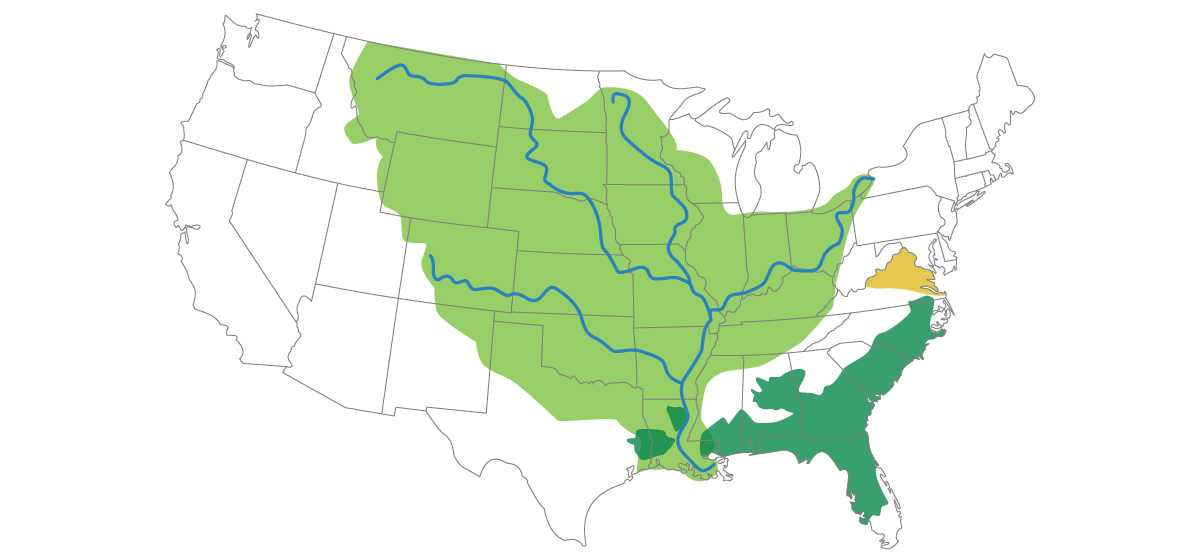
Virginia Portion of the Chesapeake Bay Watershed
Mississippi Alluvial Valley
The Longleaf Range
Virginia Portion of the Chesapeake Bay Watershed
The Virginia area of the Chesapeake Bay Watershed has 650,000 acres that are not forested but within 300 feet of a perennial stream that flows into the bay. By planting trees around these watersheds, we can restore degraded streams, replant denuded stream buffers, and preserve intact forested stream buffers. Forest Green and our sister company, Conservation Plus, work to restore wetlands that have been hydrologically altered, replant wetlands that have been cleared or otherwise maintained for agricultural purposes, and preserve high-quality existing wetlands.
Imagine if we restored all 650,000 acres. Think about what that would do to clean up the largest estuary in the United States.
Mississippi Alluvial Valley
Forest Green works with our sister company, GreenTrees, to make a difference in the Mississippi Alluvial Valley, America's Amazon, by driving large-scale reforestation efforts that can help restore the habitat of hundreds of wildlife species while bringing other untold benefits to the region and beyond. The Mississippi Alluvial Valley is a vital ecosystem for 60% of all migrating birds, and home to multiple endangered species. For every 1 acre of farmland that is reforested, 15.5 lbs of nitrogen and phosphorus will be kept out of the Mississippi River, and for every $1 million invested in forest management and reforestation projects, 39.7 jobs are created.
GreenTrees, along with its 500+ landowner partners, has reforested over 120,000 acres in the Mississippi Alluvial Valley already and has a goal of reforesting 1 million acres.
The Longleaf Range
The Longleaf Range is The South’s Cathedral Forest. The 90 million acres of longleaf that once swept through the South is now down to only 2 million acres today. It is not enough to hold the line and watch an endangered ecosystem give way to the hands of time. We must aggressively pursue new avenues to create a mechanism that allows new forms of capital to help turn the tide and restore this vital ecosystem. To do so we must dare to pose new questions ---for new questions lead to sparks of innovation that cause transactions of change.
So, we pose a simple but profound question, what would the environmental and economic impact be if we restored over 2 million new acres back to the longleaf pine ecosystem? How do we attract billions of dollars of private capital to value the longleaf ecosystem enough to restore it on scale? It starts with imagination, ingenuity and inspiration. With each in hand, we can restore and revitalize The South’s Cathedral Forest.




